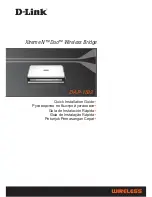
4-3
z
auto – Sorts ACL rules in depth-first order. Depth-first ordering ensures that any subset of a rule is
always matched before the rule.
lists the sequence of tie breakers that depth-first
ordering uses to sort rules for each type of ACL.
The match order of WLAN ACLs can only be config.
Table 4-2
Sort ACL rules in depth-first order
ACL category
Sequence of tie breaker
IPv4 basic ACL
1) VPN
instance
2)
More 0s in the source IP address wildcard (more 0s means a narrower IP address
range)
3)
Smaller rule ID
IPv4 advanced ACL
1) VPN
instance
2)
Specific protocol type rather than IP (IP represents any protocol over IP)
3)
More 0s in the source IP address wildcard mask
4)
More 0s in the destination IP address wildcard
5)
Narrower TCP/UDP service port number range
6) Smaller
ID
IPv6 basic ACL
1) Longer prefix for the source IP address (a longer prefix means a narrower IP
address range)
2) Smaller
ID
IPv6 advanced ACL
1)
Specific protocol type rather than IP (IP represents any protocol over IPv6)
2)
Longer prefix for the source IPv6 address
3)
Longer prefix for the destination IPv6 address
4)
Narrower TCP/UDP service port number range
5) Smaller
ID
Ethernet frame
header ACL
1) More 1s in the source MAC address mask (more 1s means a smaller MAC
address)
2)
More 1s in the destination MAC address mask
3) Smaller
ID
z
The AP does not support ACL rules with the VPN instance attribute.
z
A wildcard mask, also called an inverse mask, is a 32-bit binary and represented in dotted decimal
notation. In contrast to a network mask, the 0 bits in a wildcard mask represent 'do care' bits, while
the 1 bits represent 'don’t care bits'. If the 'do care' bits in an IP address identical to the 'do care' bits
in an IP address criterion, the IP address matches the criterion. All 'don’t care' bits are ignored. The
0s and 1s in a wildcard mask can be noncontiguous. For example, 0.255.0.255 is a valid wildcard
mask.















































